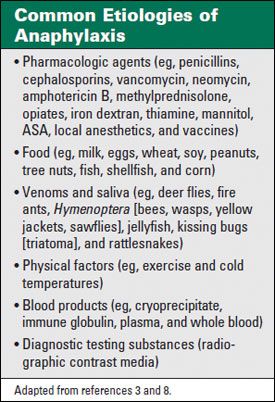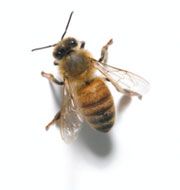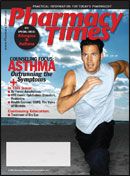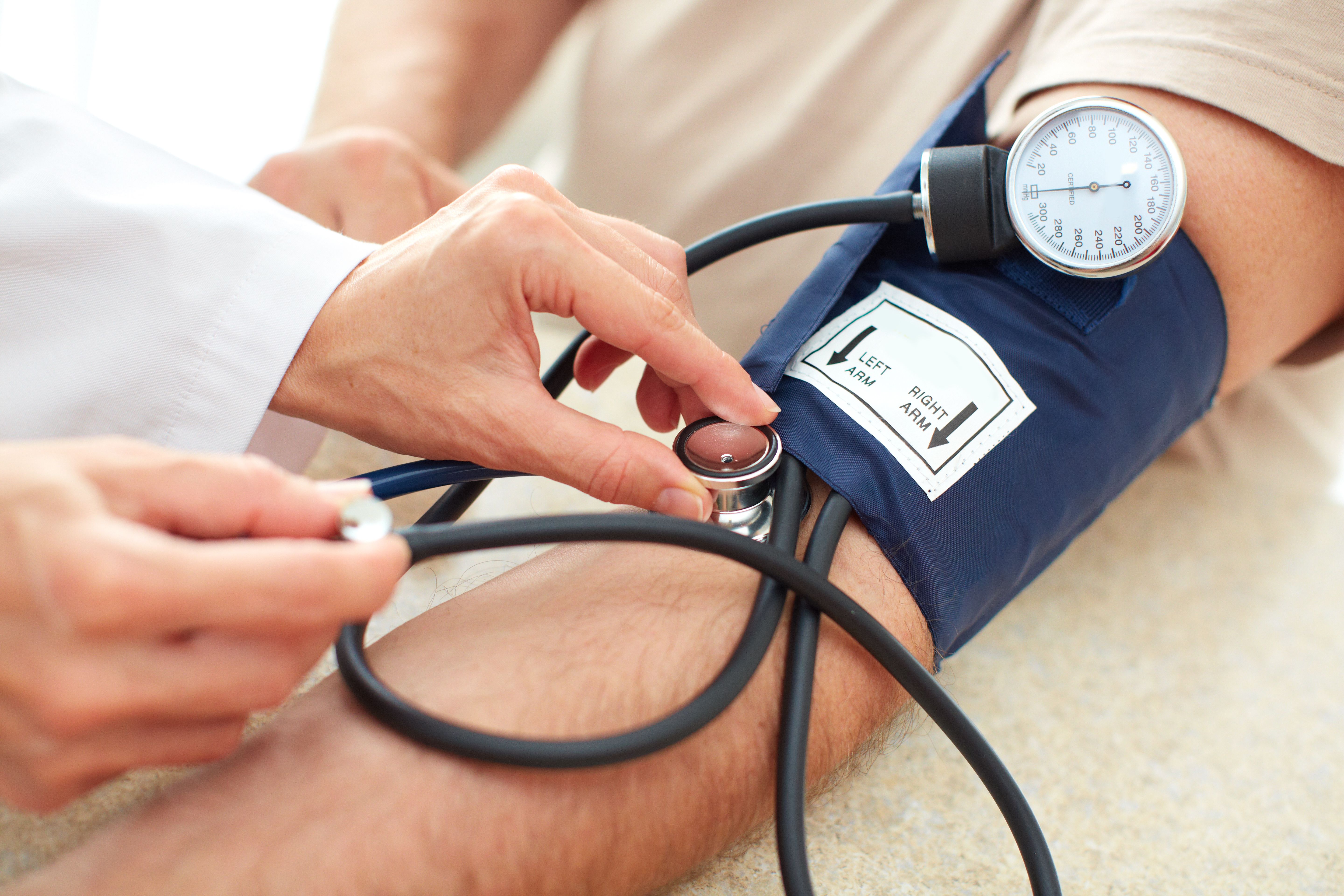Publication
Article
Pharmacy Times
Rapid Response: Anaphylaxis--Avoiding a Fatal Reaction
Author(s):
Optimal management of anaphylaxis is avoidance of known triggers, but if a reaction occurs, being prepared is crucial to successful treatment and preventing.
Ms. Terrie is a clinical pharmacy writer based in Haymarket, Virginia.

Anaphylaxis is a potentially fatal, systemic immediate hypersensitivity reaction involving multiorgan systems. It is caused by a rapid immunoglobulin E�mediated immune release of mediators from tissue mast cells and peripheral blood basophils, characterized by cardiovascular collapse, respiratory compromise, and cutaneous and gastrointestinal (GI) symptoms.1-4
A severe allergic reaction that is the result of exposure to a food, insect sting, medication, or physical factor, anaphylaxis was first recognized in 1902 and is considered to be both a serious and bewildering condition. Currently, anaphylaxis has no universally accepted definition, and consensus, diagnostic criteria, and a clear understanding of its underlying pathophysiology are lacking.4,5
Because anaphylaxis is a medical emergency that requires immediate recognition and intervention, health care professionals need to be aware of preventive measures and able to recognize its signs to ensure that the patient is treated both promptly and appropriately. An estimated 40.9 million individuals in the United States have allergic sensitivities that put them at risk for anaphylaxis.5 Furthermore, because anaphylaxis is not a reportable disease, morbidity and mortality are likely to be underestimated. The estimated lifetime risk per individual in the United States is 1% to 3%, with a mortality rate of 1%.6 Although fatalities are relatively rare, milder forms of anaphylaxis occur much more frequently, and this has been linked to exposure to a greater number of potential allergens. Between 500 and 1000 fatal cases of anaphylaxis are estimated to occur in the United States every year.7

Reactions to penicillin account for 75% of all anaphylactic deaths.3 An estimated 33% of anaphylactic reactions are triggered by food, such as shellfish, peanuts, eggs, fish, and milk.3
Examples of common etiologies associated with anaphylaxis are listed in the Table.
As many as 25% of people who have an anaphylactic reaction will experience biphasic anaphylaxis, a recurrence in the hours following the beginning of the reaction, and will require further medical treatment, including additional epinephrine injections.9
Symptoms of Anaphylaxis
Symptoms of anaphylaxis typically occur within 5 to 30 minutes of exposure. 3,11 Cutaneous symptoms, such as urticaria and angioedema, are the most common. Other cutaneous symptoms include diffuse erythema and generalized pruritus.3,6,11 Respiratory symptoms include dyspnea, wheezing, and upper airway obstruction from edema.3,6 GI symptoms include diarrhea, nausea, vomiting, and abdominal pain. Cardiovascular symptoms, which affect an estimated 33% of patients, include tachycardia, bradycardia, cardiac arrhythmias, angina, and hypotension.3,6 Other symptoms include syncope, dizziness, headache, rhinitis, substernal pain, pruritus, and seizure.3,6
Epinephrine
Epinephrine is the drug of choice and primary therapy in the emergency management of anaphylaxis resulting from insect bites or stings, foods, drugs, latex, or other allergic triggers, and it should be administered immediately.3,12,13 In general, intramuscular (IM)injections in the thigh of 1:1000 solution of epinephrine are administered in doses of 0.3 to 0.5 mL for adults and 0.01 mg/kg for children.14-16 Many physicians may elect to repeat dosing 2 to 3 times at 10- to 15-minute intervals if needed, depending on response.15,16

Epinephrine is classified as a sympathomimetic drug that acts on both alpha and beta adrenergic receptors.12-14,16,17 Alpha-agonist effects include increased peripheral vascular resistance, reversed peripheral vasodilatation, systemic hypotension, and vascular permeability.12,13,15 Beta-agonist effects include bronchodilatation, chronotropic cardiac activity, and positive inotropic effects.12,13,15 The use of epinephrine for a life-threatening allergic reaction has no absolute contraindications.13,14
Patients with cardiovascular collapse or severe airway obstruction may be given epinephrine intravenously in a single dose of 3 to 5 mL of an epinephrine solution over 5 minutes, or by a continuous drip of 1 mg in 250-mL 5% dextrose in water for a concentration of 4 mcg/mL.11,15,16 This solution is infused at a rate of 1 to 4 mcg/min.16
Individuals who are at risk for anaphylaxis or have a history of reactions are typically prescribed an epinephrine autoinjector for IM injection such as EpiPen, EpiPen Jr (Dey L.P.), or Twinject (Sciele Pharma Inc) for the emergency treatment of anaphylaxis.12,13 Patients should be encouraged to carry these autoinjectors with them at all times in case of a reaction. The devices are available in 2 strengths�0.15 mg for patients weighing between 33 and 66 lb, and 0.30 mg for those patients weighing >66 lb.
In 2007, the American Academy of Pediatrics released guidelines on the treatment of anaphylaxis which stated that on the basis of limited data, children who are healthy and weigh 22 to 55 lb (10-25 kg) can be given 0.15 mg of epinephrine, and those who weigh .55 lb can receive 0.30 mg. Specific clinical circumstances must be considered in these decisions, however.18
These products only should be injected into the anterolateral aspect of the thigh.12,13 The epinephrine autoinjectors should not be injected into the buttock or injected intravenously.12,13 Patient education is crucial to preventing the incidence of anaphylaxis, and patients need to be aware of proper administration, storage, and handling.
Patients, family members, and caregivers should be thoroughly trained on the proper use of epinephrine autoinjectors. Pharmacists also should supply patients with written instructions to reinforce proper use. Patients should be reminded to seek medical care regardless of response to self-treatment, so that they can access additional therapies, such as oxygen, intravenous (IV) fluids, corticosteroids, respiratory support, inotropic agents, albuterol, and histamine2 receptor antagonists (H2RAs).14,15 Furthermore, patients should be observed for biphasic reactions, which usually occur within 4 hours of the reaction.14,15

Adjunctive Therapies
Adjunctive therapies include antihistamines, corticosteroids, and albuterol. Dopamine may be required to maintain blood pressure, and glucagon can be used in patients taking beta-blockers who have refractory anaphylaxis.15-17
All patients who have anaphylaxis should receive oxygen at 6 to 8 L/min. Oxygen administration is especially important in patients who have a history of cardiac or respiratory disease, inhaled b2-agonist use, and who have required multiple doses of epinephrine. The use of normal IV saline also is recommended. 17
Antihistamines (H1 and H2 antagonists) are often used as adjunctive therapy for anaphylaxis. It is important to note that because these agents have a much slower onset of action than epinephrine, they should never be administered alone as a treatment for anaphylaxis.15,16
Diphenhydramine is approved by the FDA for treatment of anaphylaxis, and IV administration provides faster onset of action.15 It blocks the effects of released histamine at the H1 receptor, therefore treating flushing, urticarial lesions, vasodilatation, and smooth muscle contraction in the bronchial tree and GI tract. In general, diphenhydramine is given at a dose of 10 to 50 mg IV/IM every 4 hours as needed.15 The IV rate should not exceed 25 mg/min, and should not exceed 400 mg/day.15 For milder cases, oral dosing for adults is recommended at 25 to 50 mg every 6 to 8 hours, not to exceed 400 mg/day. Dosing for the pediatric population is 5 mg/kg/day in divided doses 3 to 4 times a day, not to exceed 300 mg/day.15
H2RAs, such as ranitidine and cimetidine, block the effects of released histamine at H2 receptors, therefore treating vasodilatation and possibly some cardiac effects, as well as glandular hypersecretion.15
Some research suggests that H2 blockers with H1 blockers have additive benefit over H1 blockers alone in treating anaphylaxis.6,15,16 Ranitidine is probably preferred over cimetidine in anaphylaxis, because of the risk for hypotension with rapidly infused cimetidine and the multiple, complex drug interactions associated with the drug.15 Cimetidine should not be administered to children with anaphylaxis, because dosages have not been established.15,16
In addition, Lieberman et al suggest the following interventions16:
- For bronchospasms resistant to adequate doses of epinephrine, the use of an inhaled agonist (eg, nebulized albuterol, 2.5-5 mg in 3 mL of saline and repeat as necessary) may be employed.
- Consider vasopressor infusion for hypotension refractory to volume replacement and epinephrine injections. Continuous hemodynamic monitoring is important. For example, dopamine (400 mg in 500 mL of 5% dextrose) can be infused at 2 to 20 mcg/kg/min and titrated to maintain systolic blood pressure of >90 mm Hg.
- When a concomitant ß-adrenergic blocking agent complicates treatment, consider glucagon infusion. The dosage of glucagon is 1 to 5 mg (20-30 mcg/kg [maximum dose of 1 mg] in children) administered intravenously over 5 minutes and followed by an infusion (5-15 mcg/ min) titrated to clinical response.
- For patients with a history of idiopathic anaphylaxis or asthma, and patients who experience severe or prolonged anaphylaxis, consider the use of systemic glucocorticosteroids. Although glucocorticosteroids typically are not helpful acutely because they may have no effect for 4 to 6 hours (even when administered intravenously), their use may prevent recurrent or protracted anaphylaxis. IV glucocorticosteroids should be administered every 6 hours at a dosage equivalent to 1 to 2 mg/kg/day. Oral administration of glucocorticosteroids (eg, prednisone, 0.5 mg/kg) might be sufficient for less critical anaphylactic reactions.
Prevention
Ideally, the optimal management of anaphylaxis is avoidance of known triggers, but if a reaction occurs, being prepared is crucial to successful management and preventing complications. Patients with a history of anaphylactic reactions should be encouraged to wear Medic Alert bracelets indicating known allergies. They should be counseled on the proper use of the autoinjectors and always carry them for prompt self-treatment. They should always keep track of the expiration date of their autoinjector. Patients with a history of allergies should avoid known allergens and be reminded to always read the labels of medications and food products.
References
- Definition/Symptoms/Incidence. Anaphlaxis.com Web site. www.anaphylaxis.com/pro/6_1_3.cfm. Accessed January 29, 2009.
- Lieberman P. Anaphylaxis. Med Clin N Am. 2006;90(1):77-95.
- Tang AW. A practical guide to anaphylaxis. Am Fam Physician. 2003;68(7):1325-1332.
- Peavy RD, Metcalfe DD. Understanding the mechanisms of anaphylaxis. Curr Opin Allergy Clin Immunol. 2008;8(4):310-315.
- What is Anaphylaxis? EpiPen Web site. www.epipen.com/anaphylaxis_whatis.aspx#stats. Accessed January 28, 2009.
- Rakel RE and Bope ET. Conn's Current Therapy 2008. 60th ed. Philadelphia: Saunders; 2007:chap 188. MD Consult Web site. www.mdconsult.com/das/book/body/119041677-2/0/1621/383.html. Accessed January 29,2009.
- Krause RS. Anaphylaxis. Medscape Web site. http://emedicine.medscape.com/article/756150-overview. Accessed February 1, 2009.
- Kobrynski LJ. Anaphylaxis. Clin Pediatr Emerg Med. 2007;8:110-116.
- Treatment Guidelines. EpiPen Web site. www.anaphylaxis.com/pro/6_3.cfm. Accessed January 28, 2009.
- Darr CD. Pediatric Respiratory Emergencies. In: Marx J, ed. Rosen's Emergency Medicine: Concepts and Clinical Practice. 6th ed. St. Louis: Elsevier Health Sciences; 2006:chap 167. MD Consult Web site. www.mdconsult.com/das/book/body/118764067-3/799184944/1365/534.html#4-u1.0-B0-323-02845-4..50172-4--cesec63_8572. Accessed January 29, 2009.
- Beer MH, Porter RS, Jones TV, eds. Anaphylaxis. In: RS Porter, TV Jones, eds. Merck Manual of Diagnosis and Therapy. 18th ed. West Point, PA: Merck & Co; 2006:1360-1361.
- EpiPen [prescribing information]. EpiPen Web site. www.anaphylaxis.com/pro/6_6_7.cfm. Accessed January 29, 2009.
- Twinject [prescribing information]. Twinject Web site. www.twinject.com/downloads/twinject_Prescribing_Information.pdf. Accessed January 29, 2009.
- Sicherer SH, Teuber S. Current approach to the diagnosis and management of adverse reactions to foods. J Allergy Clin Immunol. 2004;114(5):1146-1150.
- Dreskin SC, Palmer GW. Anaphylaxis. Medscape Web site. http://emedicine.medscape.com/article/135065-overview. Accessed February 1, 2009.
- Lieberman P, Kemp SF, Oppenheimer J, Lang DM, Bernstein IL, Nicklas RA. The diagnosis and management of anaphylaxis: an updated practice parameter. J Allergy Clin Immunol. 2005;115:483-523.
- Oswalt ML, Kemp SF. Anaphylaxis: Office Management and Prevention. Immunol Allergy Clin North Am. 2007; 27(2):177-91.
- Sicherer SH, Simmons, FE. Self-Injectable Epinephrine for First-Aid Management of Anaphylaxis. American Academy of Pediatrics Web site. Accessed January 29, 2009.
- Anaphylaxis Statistics. EpiPen.Web site. www.epipen.com/anaphylaxis_whatis.aspx#stats. Accessed on January 30, 2009.
Newsletter
Stay informed on drug updates, treatment guidelines, and pharmacy practice trends—subscribe to Pharmacy Times for weekly clinical insights.







